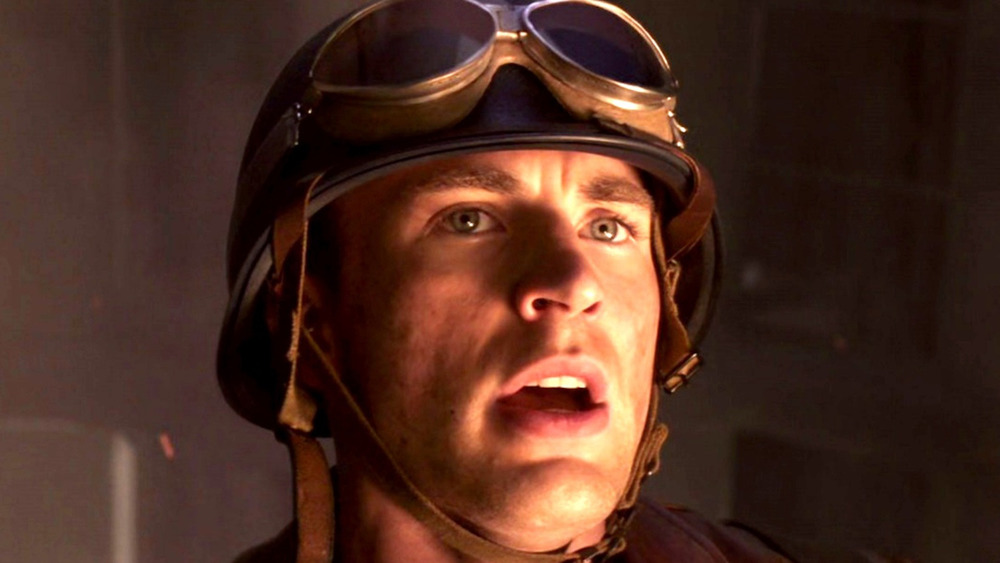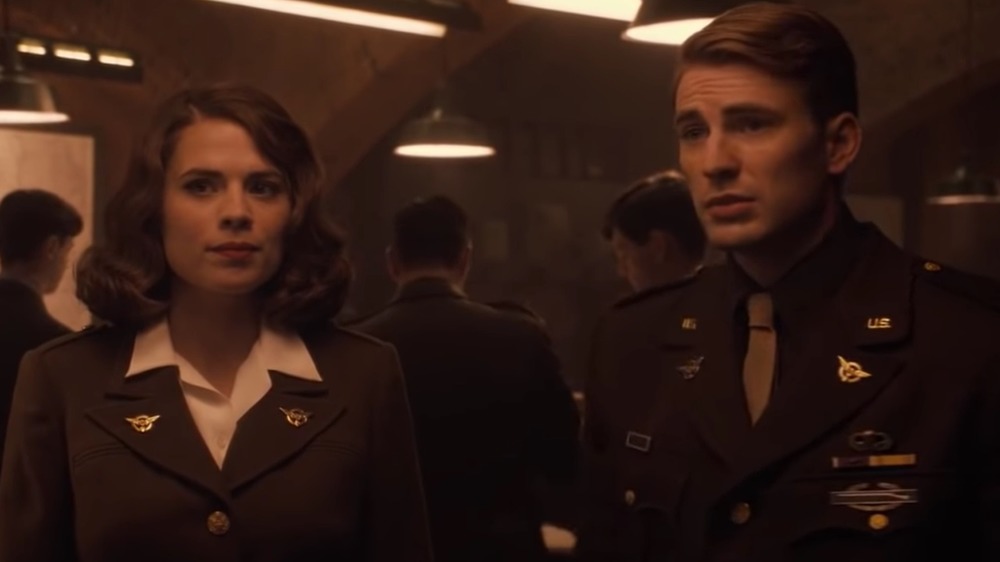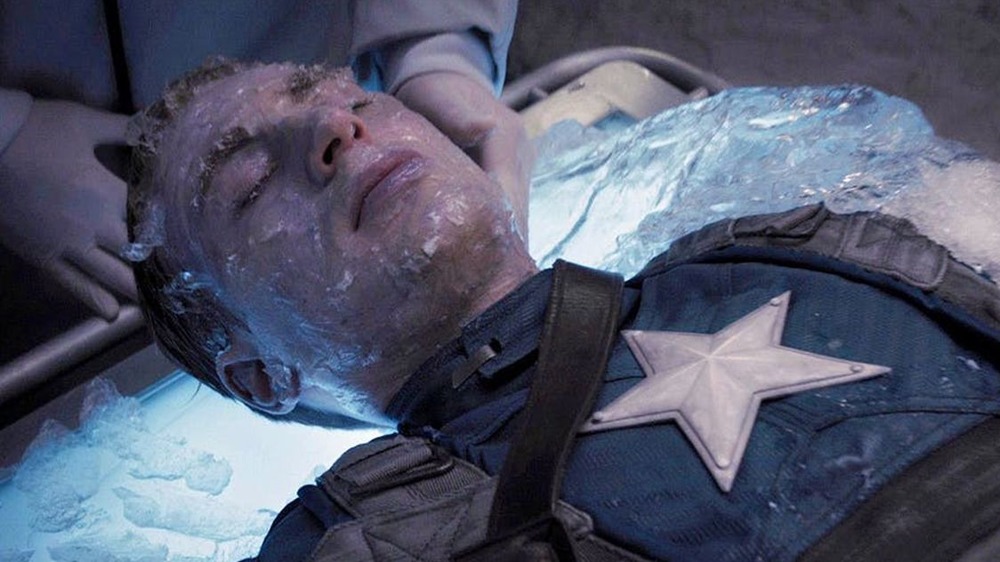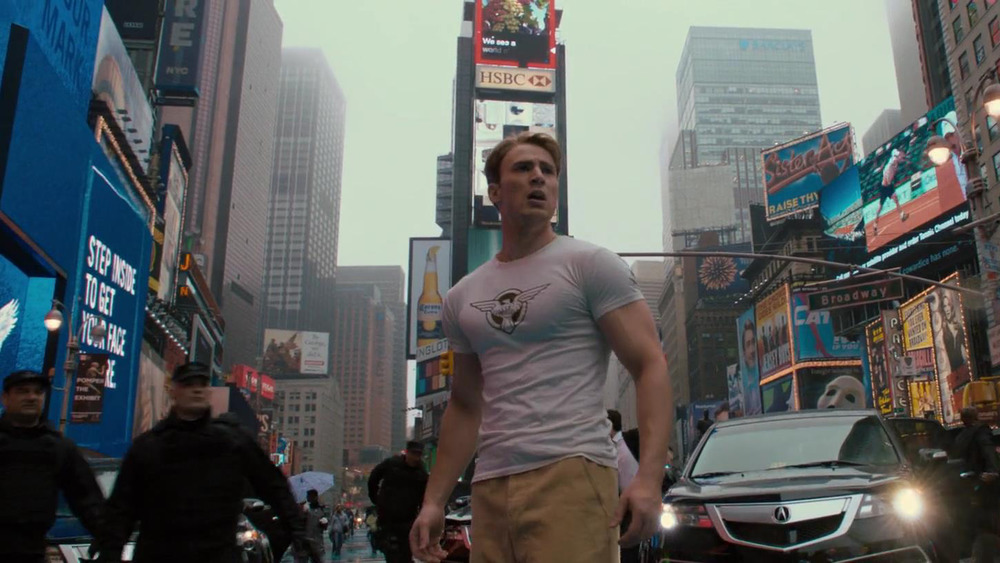The Ending Of Captain America: The First Avenger Explained
"And you couldn't have jumped out of the plane before you crashed it?"
Seventeen movies after Captain America: The First Avenger, audiences finally (almost) got to hear someone ask. Instead, the moment comes during a deleted scene from Avengers: Endgame, when Colonel James Rhodes (Don Cheadle) finds himself one-on-one with Captain Steve Rogers (Chris Evans) and uses the opportunity to question Captain America about the crash that trapped him in suspended animation in the Arctic ice for decades. The scene cuts off before Rogers gives an answer, but the implication is clear: true believer, you're not the only one wondering whether this captain had to go down with his ship.
But of course he did. At the core of Cap's character is the sacrifices he's willing to make. This is the Steve Rogers who got selected to be the Super-Soldier in the first place, who doesn't hesitate to jump on a grenade in training while everyone else runs for cover. Becoming Captain America didn't change that part of him. The potential cost of doing good has never phased him. To ensure those lives were saved, he was willing to do whatever it takes.
Here's a lookback on the ending of Captain America: The First Avenger.
Why didn't Captain America jump out of the plane?
In the film's final set piece, Captain America races down a Hydra runway in pursuit of the Red Skull's (Hugo Weaving) prototype super-bomber in a souped-up auto driven by Colonel Chester Phillips (expert rocket-car driver Tommy Lee Jones). He gets a kiss from Agent Peggy Carter before he climbs aboard, fights through the Hydra soldiers, and stops some of its weapons of mass destruction. When he and his nemesis face off, the Red Skull is ultimately defeated by his own hubris. He touches the unprotected Tesseract and is sucked into a wormhole through space to a place audiences would finally get to visit during Avengers: Infinity War.
But that's not the end of Rogers' troubles. The plane is locked on autopilot, its armaments capable of launching at any time. He decides the only way to protect New York City is to put an end to the threat via the quickest means available — by ditching it in the water. But before he does so, he talks through his decision with Peggy on the radio, her imploring him to find another way, him assuring her he has to do this. She realizes quickly that his mind is made up, and as a goodbye they spin a shared fantasy of meeting for a long-delayed dance in a week's time. He hits the water mid-sentence, cutting off the lie they've been telling each other abruptly.
The final piece of The Avengers puzzle arrives...
So, Rogers has defeated the villain, sort of. He crashed the plane, and saved the world. Now there's another problem the movie has to solve: Captain America was set to appear in The Avengers the year after his solo film comes out, and the latter film takes place 70 years into the future. Iron Man (Robert Downey Jr.) is already there. Thor (Chris Hemsworth) may be doing stuff in Asgard but at least their concept of time meshes well with ours, so he can probably make it if you get it on his calendar early enough. How do you get Captain America there too?
Fortunately, this reintegration had been part of the character's lore for nearly 50 years, by the time The First Avenger was released. The first time Cap was thawed out and introduced to the Avengers happened in the comics in Avengers #4 in 1964. He was still a man out of time then, still struggling to come to grips with the cultural changes that had taken place between the dying days of the second World War and the mid-1960s. (Of the items in his notebook to check up on from the U.S. release of Captain America: The Winter Soldier, the only ones that would have been applicable then were "I Love Lucy" and "Berlin Wall – Up," unless he was willing to go a long way to look for Thai food.) The only real change the MCU had to make to this second origin was the length of time he stayed under, frozen in stasis.
...and the seeds of his departure are sown
The First Avenger tries to break it to him gently, putting him in a period recovery room with a Brooklyn Dodgers game on the radio. But he susses out that the game is from well before his last memory. He was even at Ebbets Field for it and recognizes it as being from May of 1941, which is an underrated feat of super-memory. Suspicious, he breaks out of the soundstage and the facility, running through the streets of New York City until he's confronted with the truth by Nick Fury and a cadre of S.H.I.E.L.D. agents. "I had a date," he explains to Fury, compressing all his confusion and frustration into a single point: how much he cares for Peggy.
In a way, the movie's time jump is its final sacrifice. It spent its whole runtime building up this 1940's world, Steve Rogers' world, and then the end requires it to all be swept away. Characters like Bucky (Sebastian Stan) and the Red Skull would be brought forward into new roles, but for years only audiences would know what Steve's life might have been like had he followed Rhodey's advice and jumped, getting hints of what he left behind, and falling in love with Peggy a little bit themselves, via a couple of seasons of the series Agent Carter.
That changes in Endgame. After years of fighting evil, after years on the run, after seeing his friend Tony Stark make the ultimate sacrifice, Captain sees a way to get back some of what he gave up. He was going make it back to Peggy for that dance, whatever it took.



